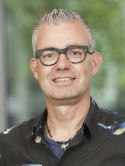| Abstract: |
Background: For decades, early allogeneic stem cell transplantation (HSCT) has been used to slow neurological decline in metachromatic leukodystrophy (MLD). There is lack of consensus regarding who may benefit, and guidelines are lacking. Clinical practice relies on limited literature and expert opinions. The European Reference Network for Rare Neurological Diseases (ERN-RND) and the MLD initiative facilitate expert panels for treatment advice, but some countries are underrepresented. This study explores organizational and clinical HSCT practices for MLD in Europe and neighboring countries to enhance optimization and harmonization of cross-border MLD care. Methods: A web-based EUSurvey was distributed through the ERN-RND and the European Society for Blood and Marrow Transplantation Inborn Errors Working Party. Personal invitations were sent to 89 physicians (43 countries) with neurological/metabolic/hematological expertise. The results were analyzed and visualized using Microsoft Excel and IBM SPSS statistics. Results: Of the 30 countries represented by 42 respondents, 23 countries offer HSCT for MLD. The treatment is usually available in 1–3 centers per country (18/23, 78%). Most countries have no or very few MLD patients transplanted during the past 1–5 years. The eligibility criteria regarding MLD subtype, motor function, IQ, and MRI largely differ across countries. Conclusion: HSCT for MLD is available in most European countries, but uncertainties exist in Eastern and South-Eastern Europe. Applied eligibility criteria and management vary and may not align with the latest scientific insights, indicating physicians’ struggle in providing evidence-based care. Interaction between local physicians and international experts is crucial for adequate treatment decision-making and cross-border care in the rapidly changing MLD field. © The Author(s) 2024. |




